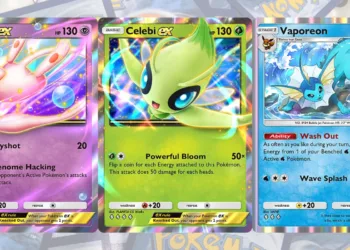As gaming technology continues to evolve, many players find themselves trying to balance performance with budget. A common question arises: is $1000 sufficient to build a gaming PC that can handle modern games? Let’s explore what you can accomplish with this budget.
Understanding the Components of a Gaming PC
Building a gaming PC requires knowledge of several critical components, each contributing to overall performance. Here’s a breakdown of essential parts:
Key Components
-
Processor (CPU)
- The brain of the computer.
- Popular choices include Intel Core i5 or AMD Ryzen 5.
-
Graphics Card (GPU)
- Essential for gaming performance.
- Options may include NVIDIA GeForce GTX 1660 or AMD Radeon RX 5600 XT.
-
Memory (RAM)
- Typically, 16GB is the sweet spot for gaming.
- Brands like Corsair and G.Skill offer reliable options.
-
Storage
- Solid State Drive (SSD) for faster load times and a Hard Drive (HDD) for additional storage.
- A common setup would be a 500GB SSD and a 1TB HDD.
-
Motherboard
- Ensures compatibility among components.
- Check for features like PCIe slots and RAM support.
-
Power Supply (PSU)
- Supplies power to all components.
- A reliable 500W or 600W PSU is generally sufficient.
- Case
- Aesthetic choice and provides airflow.
- Ensure compatibility with chosen components.
Additional Considerations
- Cooling Solutions: Stock coolers often included with CPUs may not be sufficient for heavy gaming.
- Operating System: Don’t forget to budget for Windows or explore free Linux options.
- Peripherals: Monitor, keyboard, and mouse are also necessary and can impact your overall budget.
Building within the Budget
When building a gaming PC under $1000, it’s crucial to prioritize components that will yield the best performance for your investment.
Sample Build Breakdown
Here is an example of how you might allocate your $1000 budget:
| Component | Estimated Cost |
|---|---|
| CPU | $250 |
| GPU | $350 |
| RAM | $75 |
| Storage (SSD) | $70 |
| Motherboard | $100 |
| PSU | $65 |
| Case | $50 |
| Total | $960 |
Tips for Savings
- Consider Used Parts: Many gamers sell their older components at reasonable prices.
- Look for Sales: Keep an eye out for seasonal sales, especially during Black Friday or back-to-school promotions.
- DIY Assemble: Building your own PC can save costs compared to buying a pre-built system.
Performance Expectations
A gaming PC built with this budget can handle most modern titles at 1080p resolution with decent frame rates. However, the performance will vary based on the games you play:
Gaming Performance Targets
- Esports Titles (e.g., CS:GO, Fortnite): High settings at 1080p with 60+ FPS.
- Single-player Games (e.g., Witcher 3, Cyberpunk 2077): Medium settings at 1080p with 30-60 FPS.
- Future-proofing: Consider upgrading components down the line to maintain performance.
Common Challenges
- GPU Availability: The graphics card market can fluctuate, and finding a good deal may be challenging.
- Compatibility Issues: Always check component compatibility before purchasing to avoid potential pitfalls.
- Upgrade Path: Ensure your motherboard and PSU can support future upgrades.
Investing $1000 in a gaming PC can indeed yield a solid system, but it requires careful planning and consideration of current hardware trends. By prioritizing key components and looking for smart savings opportunities, you can create a gaming rig that delivers an enjoyable gaming experience without breaking the bank.









